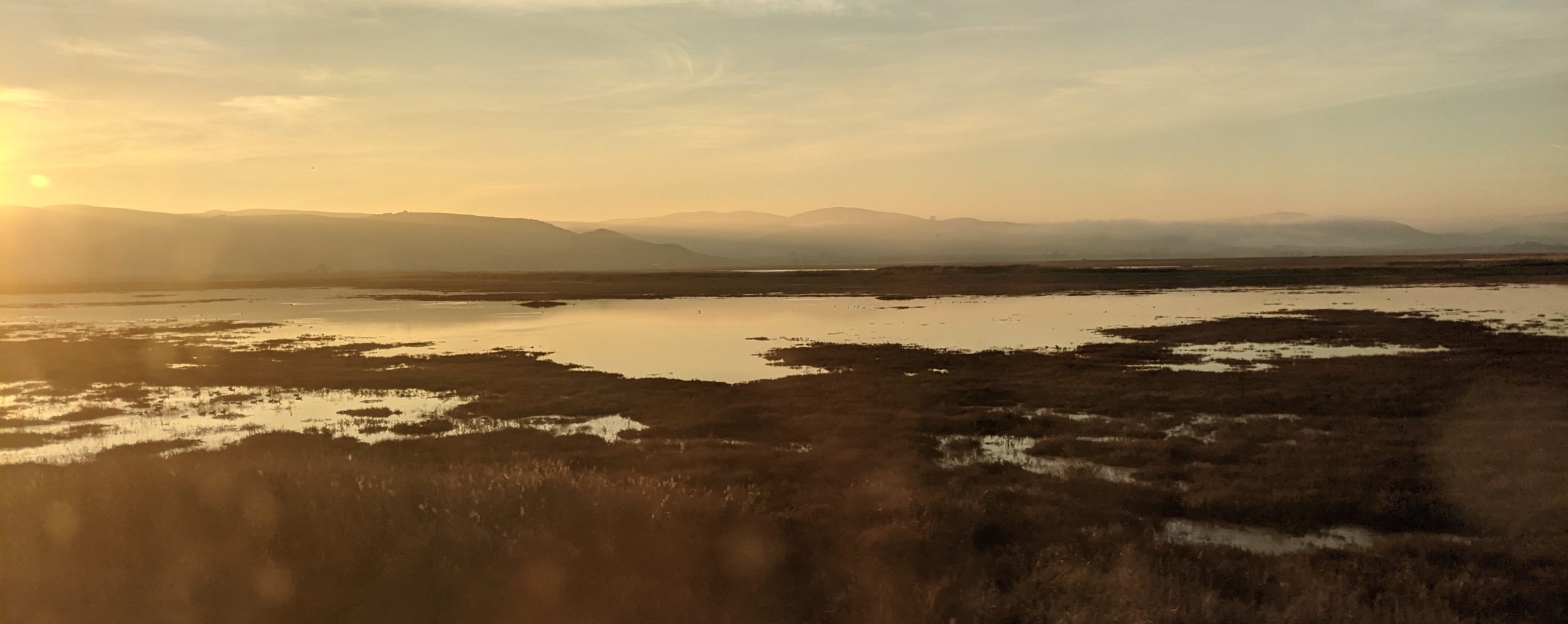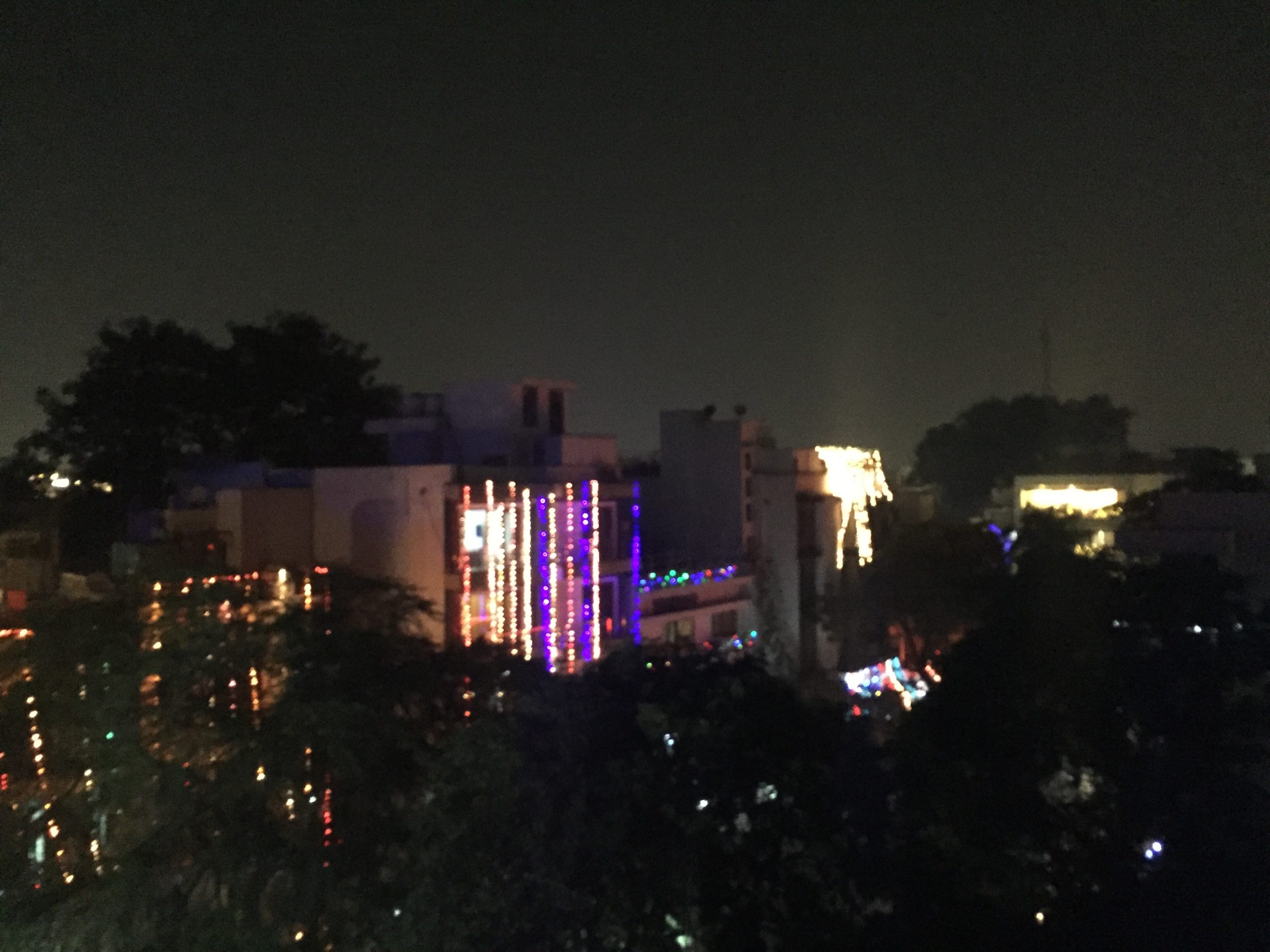The first time I flew into Delhi in early February, I had the sense we were descending into an abyss of smog. It was like a vortex below us; clear blue sky above, grey clouds of particulate matter below. I wondered when I would see the sky again.
The sky came back, blue-grey, in March. It stayed that way the next eight months, through the lovely spring, the oppressive dry heat of the summer, the monsoon humidity, the milder September and October. Now the pollution is back with a vengeance. The weather would be perfect, except… you know.
Quick lesson on PM2.5 levels and AQI. PM2.5 levels show the amount of fine particulate matter (PM2.5) in the air. These are tiny, light particles that enter your lungs. They are caused by anything from car emissions, to burning things, to dust storms, to factory smog. The fewer particles in the air the better. The higher PM2.5 goes, the higher your risk of lung cancer and many other terrible health outcomes, such as heart disease, bronchitis, asthma, and early death.
PM2.5 levels get converted into the Air Quality Index (AQI) scale, which ranges from 0-500 (or as you’ll see, 500+. Credit to aqicn.org for all the following statistics). Honolulu, the cleanest-air large city in the world (congratulations fam!), consistently sits between 10 and 20. Boston and Lusaka both seem to hover between 30 on a good day and 50 on a bad one. Under 50 is considered healthy for humans, posing “little to no risk”. When it reaches ~100, other cities go on alert. Delhi, by contrast, during winter regularly hits 300+ levels. When it goes down to < 200 people walk around and have picnics and say “hey, the air feels nice today”.
Some days I wake up and see the AQI reading in my neighbourhood is 700. It hit 999 on Diwali, the day I took the cover photo. To put it in perspective, breathing that air is like smoking multiple packs of cigarettes a day. Here you can see how bad Delhi (and North India in general) is compared to the rest of the world.
To deal with this my office has instituted a number of measures to keep us safe. We constantly monitor air quality in the office, have industrial strength purifiers on every floor, and tape over cracks in the windows. Every employee gets free masks, sealant material for houses, and air purifiers. My air purifier even has Wifi. (Why does my air purifier need to emit Wifi? It doesn’t.) We also receive reimbursement up to a certain level for other things to mitigate air pollution’s effects – like more masks, or a trip to the clear-aired mountains to work from there.
The point is: People like me with resources are the lucky ones, and I’m still sitting here with sniffles and a deathly-sounding hacking cough. If you can’t afford air purifying solutions, Delhi is a terrible place to be in the winter. (Also, these stop-gap solutions are only really useful for office workers. If you’re working selling vegetables in the open air, there’s no way you’re going to wear a mask all day. They are uncomfortable and moreover, may also cause respiratory issues and increase risk of disease transmission). If you can’t afford air conditioning, Delhi is a terrible place to be in the summer. The Delhi’s weather is capable of killing – and does kill – some of its most vulnerable residents for about half the year.
There’s a sense of fatalism I’ve seen first- and second-hand among people who can’t leave. This ranges from cab drivers who leave the windows open because they believe air conditioning is more harmful than pollution, to people who justify chain-smoking by citing that the air is already toxic, to people who literally can’t afford any of the equipment and so whose only option is to shrug. There seems to be a noxious combination of misinformation and truly justified fatalism.
But unlike the heat (which will require major global solutions that will work none too fast), there are things that can be done to reduce Delhi’s pollution. I’m not an expert on policy solutions. But there was something that did work for London, for New York, and Beijing, all of which have much lower levels of air pollution than they used to.
A pollution expert came to our office a couple weeks ago to talk about the different sources of pollution. They include: household cooking, crop burning in neighbouring states (particularly bad during this time of year), vehicles, and construction and other industries.
Something with such a large number of causes requires a large number of solutions. Some highly-touted policies that have been put in place include banning crop burning in the neighbouring states and only allowing odd- or even- number licensed cars on any given day, or offering cleaner alternatives to burning biomass for cooking. The Delhi Government is giving out thousands of masks to students (which isn’t really dealing with the causes). On the days with the worst pollution, construction is banned. Yet, pollution still persists. It is difficult to enforce these initiatives (click on the links to learn more) and it’s difficult to see what their true impacts are without being able to look at long-term trends.
This isn’t a policy memo where I’m presenting a list of all possible solutions and laying out some 10-year-plan for Delhi. I’m not qualified to do this. Ultimately, the point of this post was to present a quick snapshot of the sad situation in Delhi for those of you who have been asking, and I hope it has succeeded in this goal.

